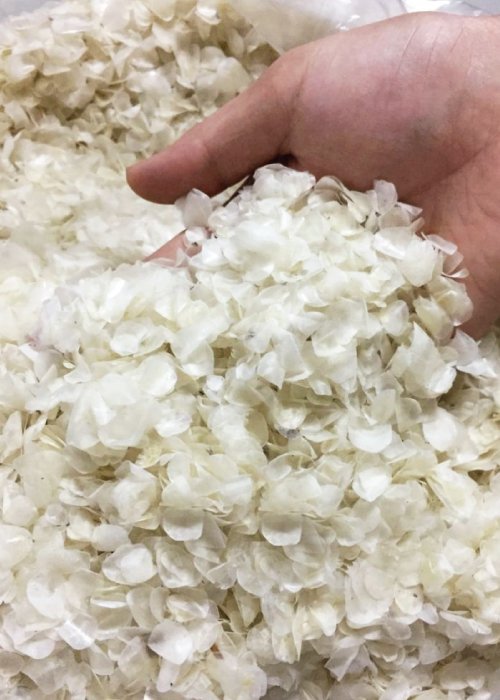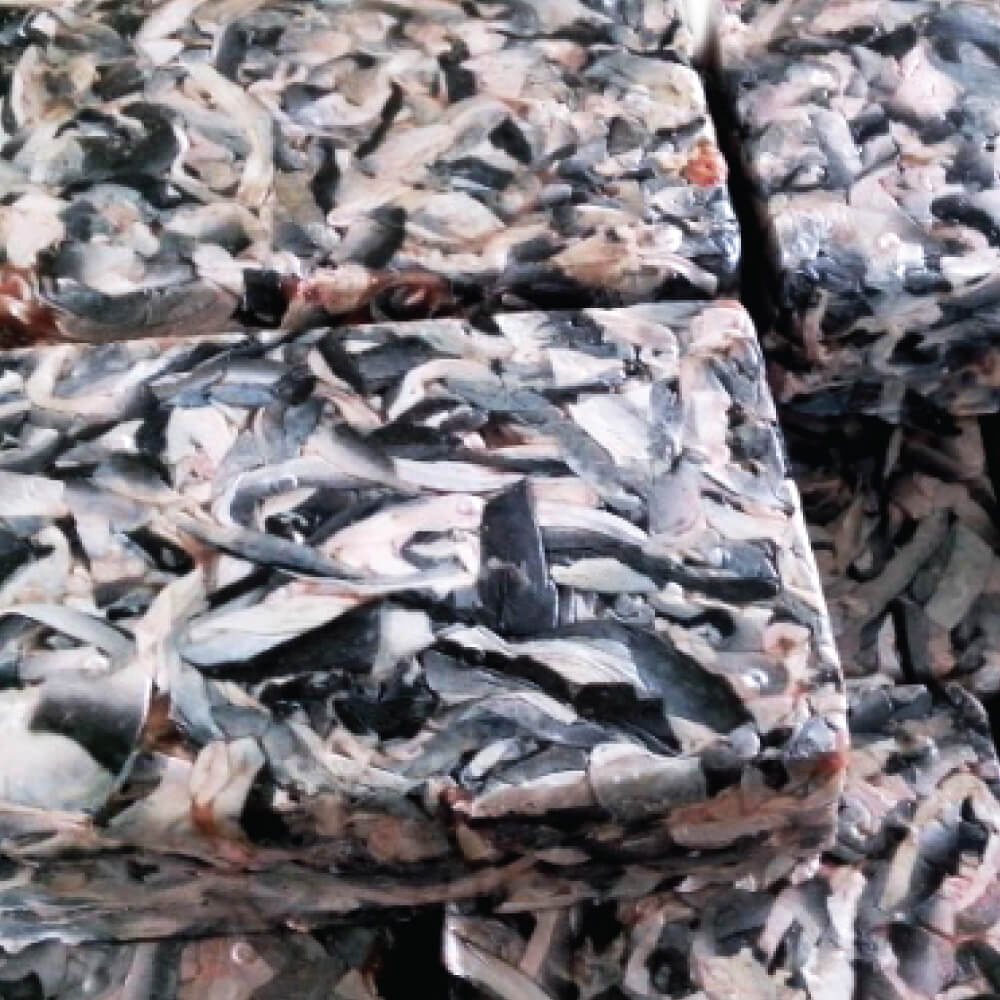

Dry Fish Scales
The origin of fish scales is from deep sea, shallow sea and fresh water (rivers and lakes). The scales are washed multiple times with clean water and sun dried or machine dried. No chemicals are used. Moisture percentage controlling and packaging are monitored carefully.
Our fish scales are mainly used in producing ossein or collagen peptide. We supply scales from below:
DEEP SEA, WILD CAUGHT FISH (D-DFS)
Pink Perch (Nemipterus Japonicus), Croaker (Johnius SPP), Emperor (Lethrinidae SPP), Red Snapper (Lutjanus SPP), Barracuda (Sphyraena),
Bulleye (Priacanthus Hamrur), Lizard fish (Saurida tumbil), Sweet Lip (Diagramma SPP).
FRESH WATER FISH (F-DFS)
Rohu (Labeo Rohita), Catla (Labeo Catla), Grass Carp (Ctenopharyngodon Idella), Silver Carp (Hypophthalmichthys Molitrix), Mrigal (Cirrhinus cirrhosus).

Frozen Fish Skin
Main source of frozen skin is from fish fillet processing and surimi industries.
The origin of fish skin is from deep sea, shallow sea and fresh water (aquaculture). The skin is washed with mild sodium hypochlorite and frozen into blocks. Frozen fish skin is used for collagen peptide extraction.
We can supply frozen skin from below:
DEEP SEA, WILD CAUGHT FISH
Reef cod, Cuttle fish, Unicorn leather jacket (ULJ), Pink perch, Croaker.
FRESH WATER FISH
Basa (Pangasius Bocourti), Tilapia.

Dry Fish Skin and Bones
Our fish skin and bones are mainly used in producing collagen peptide.
Fish skin and bones are obtained from pink perch and croaker. Pink perch and Croaker are wild caught deep sea fish. Pink perch is also known as Japanese Threadfin Bream or Nihon Itiyori (in Japanese).
Pink perch and croaker’s skin / bones has minimal moisture. In surimi industries, the meat is squeezed out from fresh fish like croaker and pink perch. It has very less fat because it is removed during extraction process. It is free of antibiotics and very rich in protein.
Research has proved that collagen extracted from fish has abundant amino acids such as glycine, proline, hydroxyproline, alanine and arginine.
Nizona Marine Products is registered with the Marine Products Export Development Authority of India (MPEDA). We are currently exporting to many countries and can provide all the necessary documents for regulatory purpose. Some of the documents are listed below:
- Export Inspection Agency Laboratory Certificate
- Health Certificate
Applications of dry fish scales
- Effluent waste water treatment using fish scales
The use of fish scales to remove heavy metals from effluent waste is a very recent innovation. Biosorption using fish scales is an environment-friendly and economically attractive alternative and can be used in pharmaceutical, petroleum, textile, tannery, automotive battery industry and many more. - Guanine
The iridescence that the fish scales emanate is due to the crystalline substance guanine (also called natural pearl essence) present in them. Guanine has a similar iridescence to oyster jewels, so it is frequently used in the cosmetics industry to add a certain luster, shimmer to their products lipsticks, nail polish etc. - Hydroxyapatite
Hydroxyapatite is a naturally occurring mineral form of calcium apatite. It is a calcium phosphate similar to the human hard tissues in morphology and composition. It is a major component of teeth offering high rigidity and better enamel. Nano-hydroxyapatite (nano-HAp) is attracting interest as a biomaterial for use in prosthetic applications due to its similarity in size, crystallography and chemical composition with human hard tissue. Bone and teeth enamel are largely composed of a form of this mineral.It is used as a coating for orthopedic implants (bone grafts/fillers) and dental care products. It helps in faster bone healing at the bone-implant interface, promotes increased gap healing between bone and hydroxyapatite, and inhibits corrosion.Further, the aging global population and growing demand for bioactive ceramics in the bone replacement surgeries and dental surgeries are fueling market growth for hydroxyapatite in orthopedic applications.Hydroxyapatite from fish bone and scales is an alternative source of hydroxyapatite (HAp) due to low manufacturing cost and safety issues. Fish sources are safe, easily available and has low risks of disease transmission.
- Microneedles
Microneedles are one of the most effective means of enhancing transdermal penetration of compounds into the body in aminimally invasive manner. To make microneedles readily available and affordable, there is a need to explore a wide range of low cost materials. It is also an area of immense interest in many industries to convert wastes to useful end products.Fish scales are chosen in particular, as they are underutilized natural resource that exists abundantly. Biopolymer extracted from fish scales dissolve in water, has good film forming ability, great mechanical strength and therefore a good candidate for micromoulding. The microneedles produced from fish scales are biodegradable. - Polymer composites
Factors like increased environmental awareness and rising oil prices have contributed to the advancement of research and development of bio-particulate polymer composites. The fish bio-waste in form of scales was investigated as a useful reinforcement for fabrication of hybrid composite which exhibited good hardness and wear resistant properties as required in many tribological applications like conveyer belts, etc.
